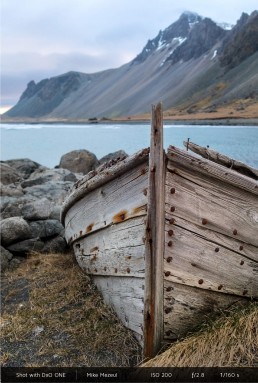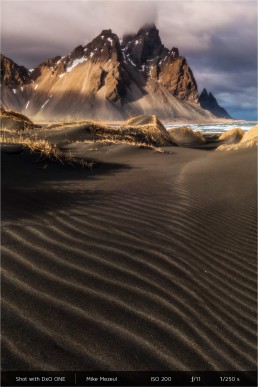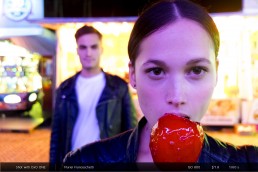Compositional layers and camera shot types Composition
Use compositional layers to create depth in your image.
The various camera shot styles are great for portrait photography.
An image must have a main subject and one or more secondary subjects. It’s important to think about the placement of each of these subjects when composing your photo. Layers and shot styles are useful for helping you compose and frame a harmonious, balanced image.
You can combine compositional layers and camera shot styles as needed, depending on your subject:
-
Compositional layers, are naturally present all around you.
-
Camera shot styles, are determined by the distance between you and your subject.
You can include a variety of layers in your scene:
-
The foreground: this is the area closest to you and is most often the bottom part of the image.
-
The middle ground, halfway between the foreground and background: this is generally where your main subject will be located. The closer the subject is to you, the more the background will appear blurred.
-
The far middle ground, this is the area behind the subject. It can contain a secondary subject.
-
The background, this is the farthest layer, and forms the backdrop of your image.
In an image with several layers, the area where you choose to focus is the middle ground. You have to decide in which layer your subject should be in focus. With your DxO ONE in AF-S or AF-OD mode, tap your smartphone screen to determine your focus area.
If you are far away from the foreground, the subjects will appear to be all in the same layer. This reduces the sense of depth and three-dimensionality in your photo.
When taking a landscape photo, place an element such as a branch or rock in the middle ground to give added depth and avoid taking a flat image. A large field in the countryside is shown to better effect if a beautiful tree is in the middle ground. When the sun is low on the horizon at the end of the day, a series of fields or small valleys creates incredible visual depth.
When taking architectural photos, carefully place an object in the middle ground to give the photo structure and fill up otherwise boring empty space.
You can use various types of camera shot styles in portrait photography. To switch styles, all you have to do is move closer or further away to your subject. Close in, the subject’s surroundings are less visible, and in some cases, you can entirely crop out the person’s environment . On the other hand, the farther away you are from your subject, the less important the subject appears; and the more you include the subject’s surroundings (which is the case when taking a wide shot), the more important to your visual story the surroundings become.
Here are the most widely used camera shot styles:
-
Wide shot: the subject is simply another part of the environment. The person and their environment are equally important in the image. This lets you situate the action and provides context.
-
Full shot: the subject is photographed from head to toe. The background still provides context but not as sharply.
-
American shot: the subject is shot from the mid-thigh up and is more prominent. The background plays a lesser role.
-
Medium shot: this is the traditional frame used for portraits. The subject is framed from the waist up. The background is blurred.
-
Close-up: the subject’s face fills the entire frame. The background is completely obscured. This type of shot is more intimate.
It’s up to you to decide which layer or style is best depending on how much you want to showcase the person and/or their environment.





 Download page
Download page